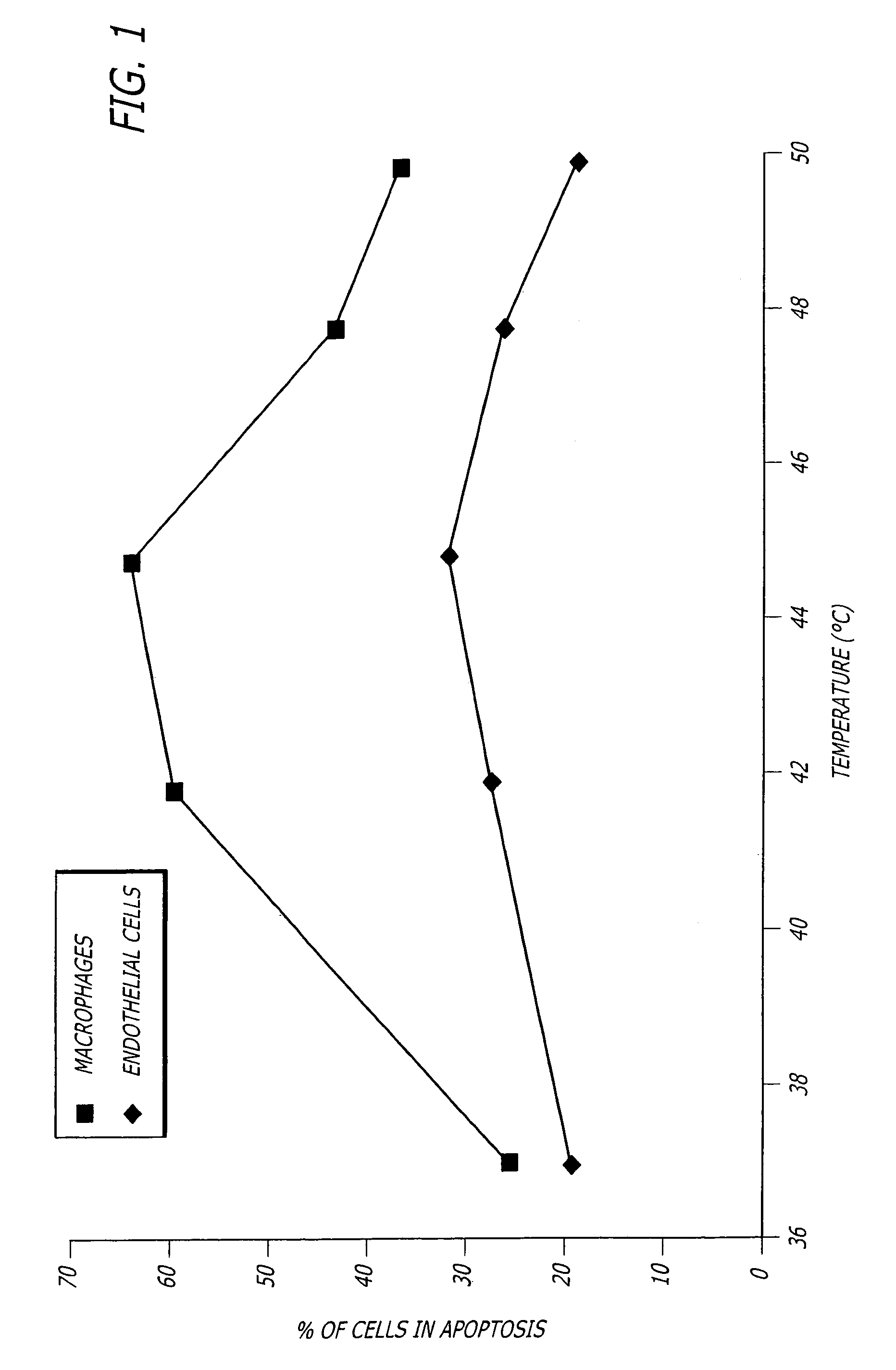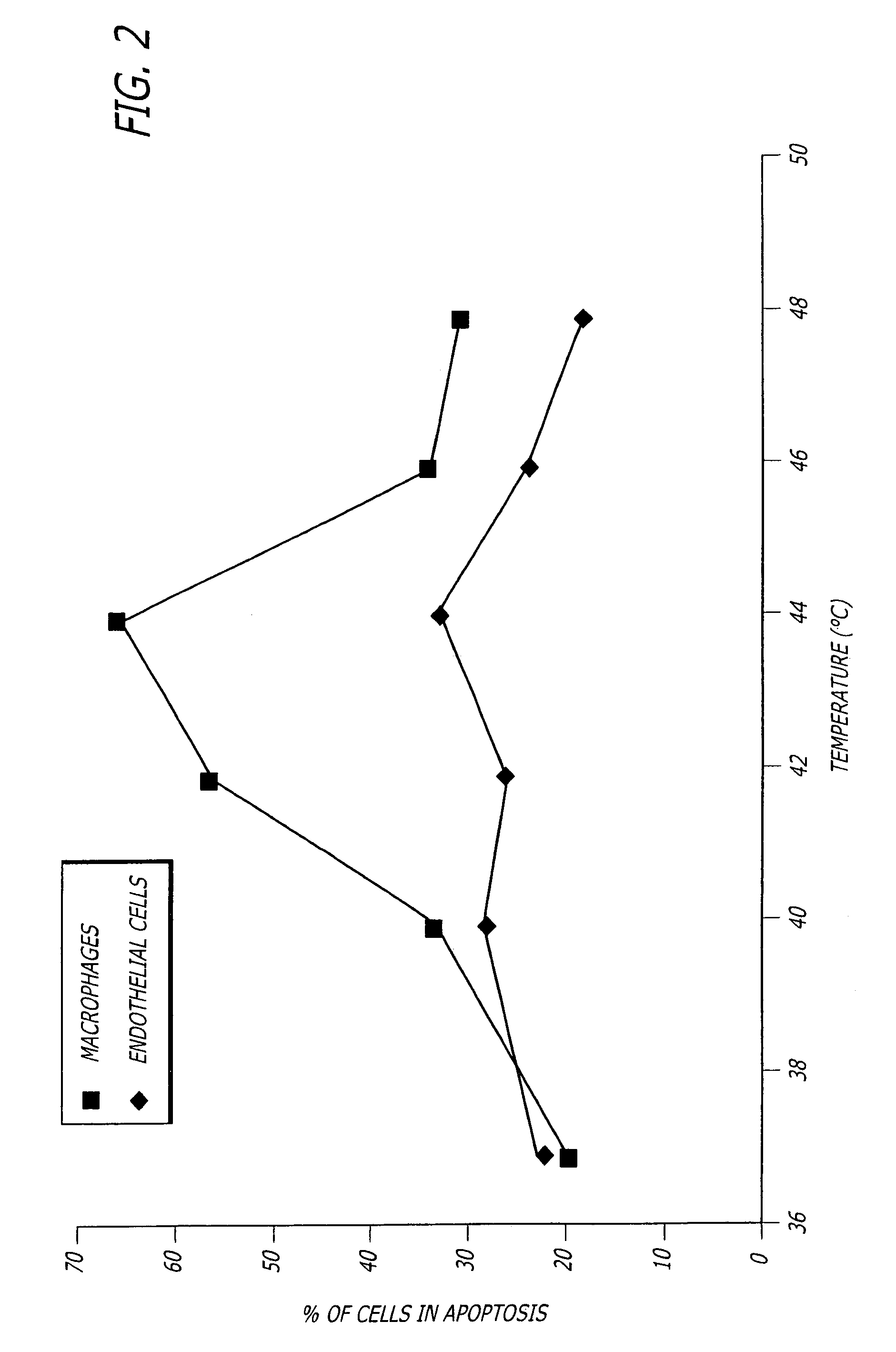Heat treatment of inflamed tissue
a technology for inflamed tissue and heat treatment, which is applied in the field of heat treatment of inflamed tissue, can solve the problems of inflamed plaques being most susceptible to rupture, injuring the heart or brain, and leading causes of death of coronary artery disease, so as to reduce or eliminate inflammation in plaques and prevent rupture.
- Summary
- Abstract
- Description
- Claims
- Application Information
AI Technical Summary
Benefits of technology
Problems solved by technology
Method used
Image
Examples
example i
[0035]The inventors have made the surprising discovery that macrophages are more susceptible to heat induced apoptosis than endothelial cells. This discovery led to the development of the present techniques that use heat to reduce inflammation in inflamed tissue and especially in inflamed atherosclerotic plaques. However, greater sensitivity to heat-induced apoptosis of macrophages is not a requirement of the invention because many athersclerotic plaques are denuded of endothelium in which case induction of endothelial cell apoptosis would be moot.
[0036]FIG. 1 shows the percent of cells from Watanabe (atherosclerosis) rabbit aorta tissue undergoing apoptosis after exposure for 15 minutes at the temperatures shown, followed by “TUNEL” staining after a 6 hour incubation at 37° C. FIG. 2 shows similar results when the cells in human carotid artery endarterectomy samples were investigated in a similar manner. Living human carotid atherosclerotic plaque was obtained by endarterectomy, im...
example ii
Treatment of Inflamed Plaques
[0039]Typically, heat induced apoptosis of inflammatory cells to prevent rupture and / or thrombosis of atherosclerotic plaques in the coronary, carotid, iliac femoral or superficial femoral arteries will be carried out in patients presenting with symptoms of ischemia. For example, patients with angina or a positive stress test, or patients with a recent myocardial infarction who are undergoing coronary angiography, will have an infrared catheter passed down the artery in a fashion similar to that of intravascular ultrasound or angioscopy, as described further below.
[0040]Some patients will be referred for this procedure for other reasons. For example, patients having plasma that shows biochemical evidence of inflammation or thrombosis, or endothelial damage or silent myocardial damage, may require coronary catheterization. Alternative tests which might bring non-symptomatic people to coronary angiography and infrared testing might include a magnetic reson...
PUM
 Login to View More
Login to View More Abstract
Description
Claims
Application Information
 Login to View More
Login to View More - R&D
- Intellectual Property
- Life Sciences
- Materials
- Tech Scout
- Unparalleled Data Quality
- Higher Quality Content
- 60% Fewer Hallucinations
Browse by: Latest US Patents, China's latest patents, Technical Efficacy Thesaurus, Application Domain, Technology Topic, Popular Technical Reports.
© 2025 PatSnap. All rights reserved.Legal|Privacy policy|Modern Slavery Act Transparency Statement|Sitemap|About US| Contact US: help@patsnap.com



